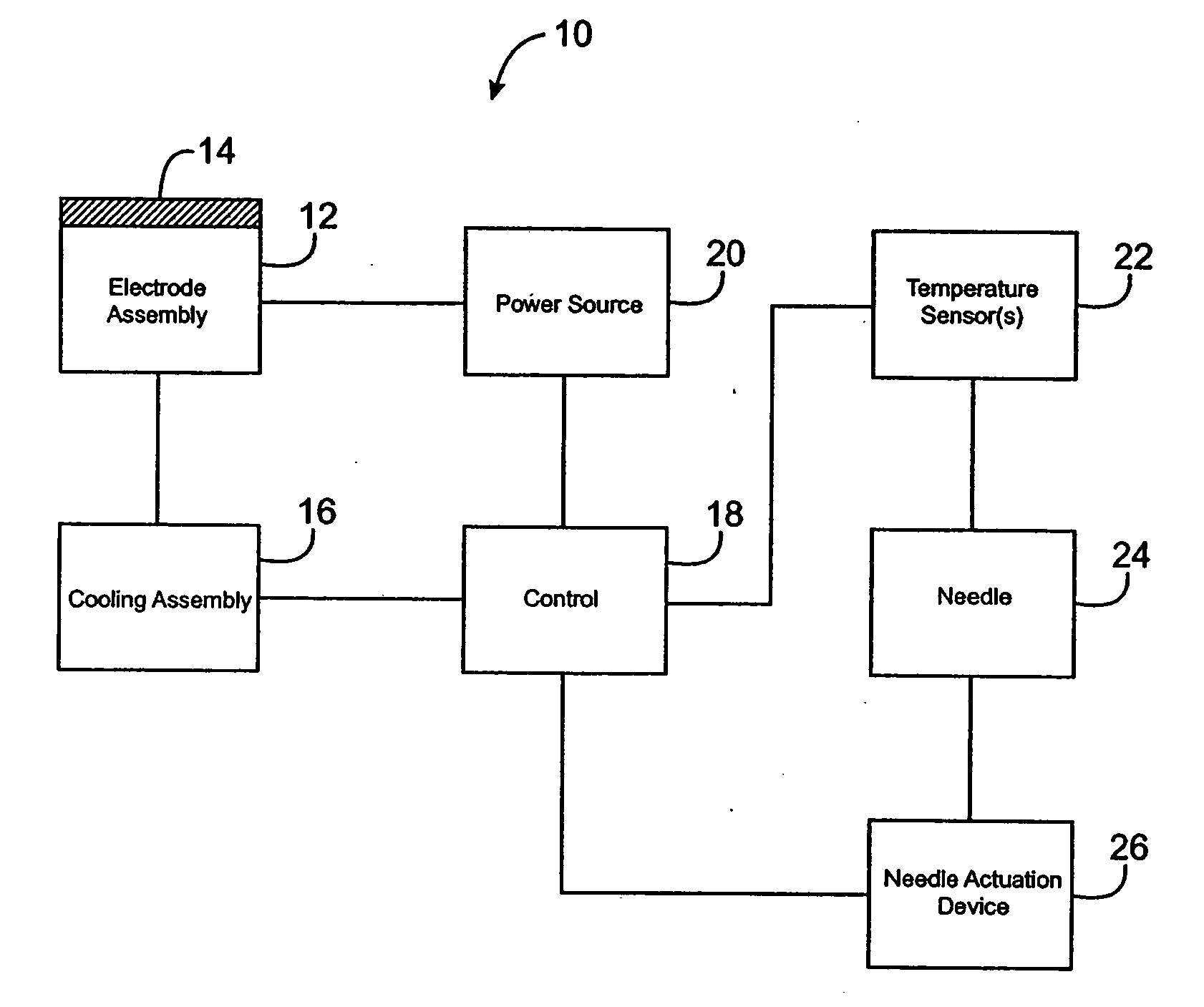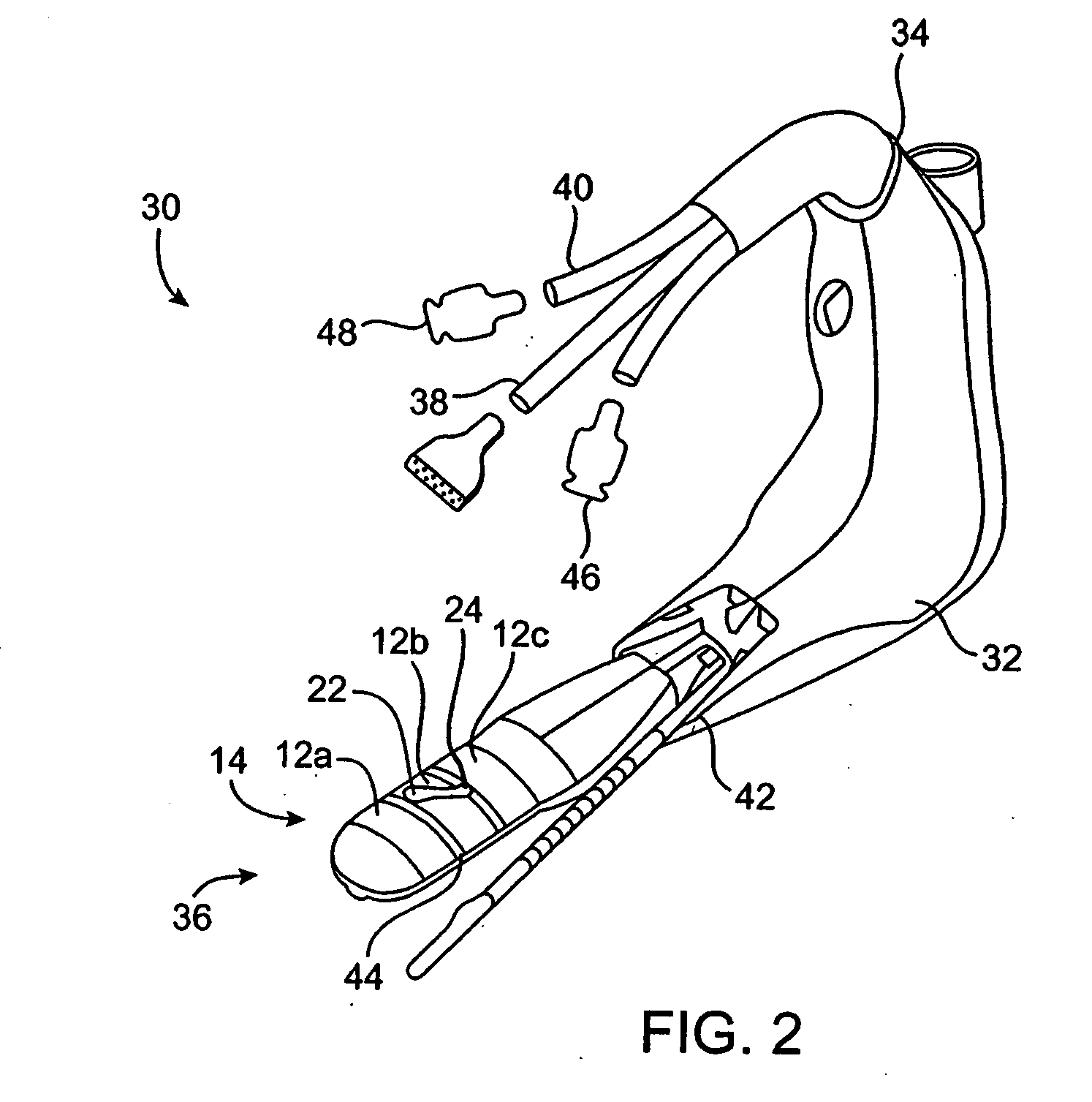Electrically heated/phase change probe temperature control
a phase change probe and electric heating technology, applied in the field of medical devices, methods and systems, can solve the problems of urinary tract infections, mechanical damage to the sphincter, and leakage of urine typically occurring in the intra-patient environment of patients,
- Summary
- Abstract
- Description
- Claims
- Application Information
AI Technical Summary
Benefits of technology
Problems solved by technology
Method used
Image
Examples
Embodiment Construction
[0039] The present invention provides methods, devices, systems, controllers, and software algorithms for controlling a temperature of a tissue contacted by a surface of an applicator during delivery of a therapeutic energy to an underlying support tissue. The present invention may enhance the structural support provided by the support tissues by inducing controlled stiffening, contraction, or shrinkage of the structural support tissue, which are typically a collagenous tissue such as fascia, ligament, or the like.
[0040] In one specific use, the present invention is for treatment of urinary incontinence. The structural support tissue will typically be part of a pelvic support system that is responsible in some manner for control of urination, or for supporting such a tissue. The tissues of the pelvic support system generally maintain the position of the genitourinary tract, and particularly the position of urinary bladder, urethra, and the bladder neck coupling these structures.
[0...
PUM
 Login to View More
Login to View More Abstract
Description
Claims
Application Information
 Login to View More
Login to View More - R&D
- Intellectual Property
- Life Sciences
- Materials
- Tech Scout
- Unparalleled Data Quality
- Higher Quality Content
- 60% Fewer Hallucinations
Browse by: Latest US Patents, China's latest patents, Technical Efficacy Thesaurus, Application Domain, Technology Topic, Popular Technical Reports.
© 2025 PatSnap. All rights reserved.Legal|Privacy policy|Modern Slavery Act Transparency Statement|Sitemap|About US| Contact US: help@patsnap.com



